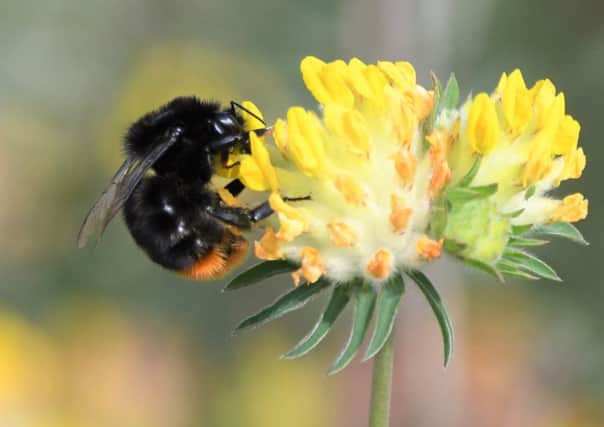Donors make a beeline for South Downs campaign and give £5,000


Dozens of donations have been received by the South Downs National Park Trust since it launched Bee Lines last month.
The campaign will work with farmers and other landowners to create new wildflower corridors.
Advertisement
Hide AdAdvertisement
Hide AdThis is essentially a ‘road system’ for insects that will link habitats and encourage pollination.
The trust, the official charity for the South Downs National Park, is hoping to raise £75,000 to help restore flower-rich habitats and create a haven for pollinators in the South Downs.
Nick Heasman, countryside and policy manager for the South Downs National Park and who is leading the project, said: “We’ve been overwhelmed by the amazing response to our Bee Lines campaign and would like to say a big ‘thank you’ to all those who have donated so far.
“The campaign is off to a flying start and we’re pleased to have had lots of messages of support.
Advertisement
Hide AdAdvertisement
Hide Ad“The fact that our pollinators are in trouble and need our help has really struck a chord with the public.
“Bees are absolutely vital to the planet and we’re hoping our campaign can both raise awareness and help populations recover.”
To find out more about Bee Lines and to donate visit www.southdownstrust.org.uk/beelines/
Statistics show that one-third of Britain’s bee population has disappeared over the past decade.
Advertisement
Hide AdAdvertisement
Hide AdA quarter of Europe’s bumblebees are now threatened with extinction.
More than 97 per cent (an area the size of Wales) of all flower-rich grasslands have been lost in England since the 1930s.
The South Downs has mirrored this national trend.
The causes include changes in land use, intensification of farming methods, habitat loss and climate change.
Bees pollinate around a third of food crops and 90 per cent of wild plants.
Key pollinating species in the National Park include honey bees, bumblebees, and the Adonis blue butterfly.